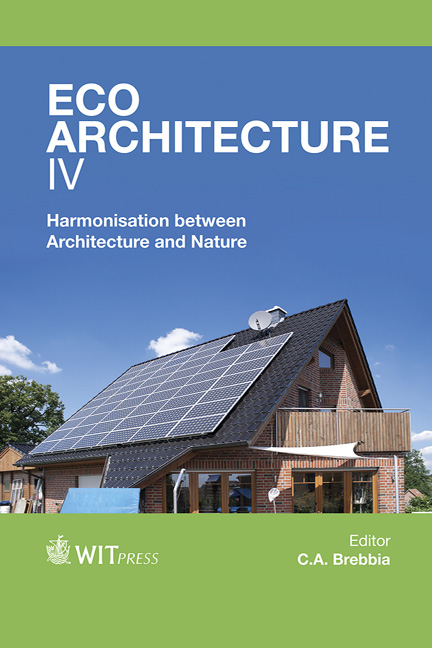Solar Cooling Design: A Case Study
Price
Free (open access)
Transaction
Volume
165
Pages
12
Page Range
399 - 410
Published
2013
Size
1,510 kb
Paper DOI
10.2495/ARC120351
Copyright
WIT Press
Author(s)
S. Grignaffini & M. Romagna
Abstract
Throughout the years various methods have been used for heat prevention and indoor temperature control in the summer in Mediterranean, tropical and subtropical countries. The alternative cooling strategies are based on various passive and low energy cooling technologies for protection of the buildings via design measures or special components to moderate the thermal gains, or to reject the excess heat to the ambient environment. All these techniques aim to reduce summer cooling loads and electricity demand for air conditioning. During the summer, in Mediterranean, tropical and subtropical countries, the demand for electricity increases because of the extensive use of heating ventilation air conditioning (HVAC) systems, which increase the peak electrical load, causing several problems in the electricity supply. The cooling of buildings can be efficiently addressed by referring to the concepts of energy efficiency and use of renewable sources. A particular method is the use of absorption chillers capable of using the thermal energy for producing chilled water. So, an integration of the system with renewable energy is possible: the absorption chiller can be supplied with thermal energy captured by solar collectors. This last mode of operation leads to the solar cooling systems. The use of solar energy to drive cooling cycles for space conditioning of most buildings is an attractive concept, since the cooling load coincides generally with solar energy availability and therefore the cooling requirements of a building are roughly in phase with the solar radiation. Moreover, they are energy efficient and environmentally safe. The purpose of this paper is to describe a solar cooling system to be installed on the roof of a building in Rome, the headquarters of the State Monopoly of Italy.
Keywords
solar cooling, transient state calculation, TRNsys





